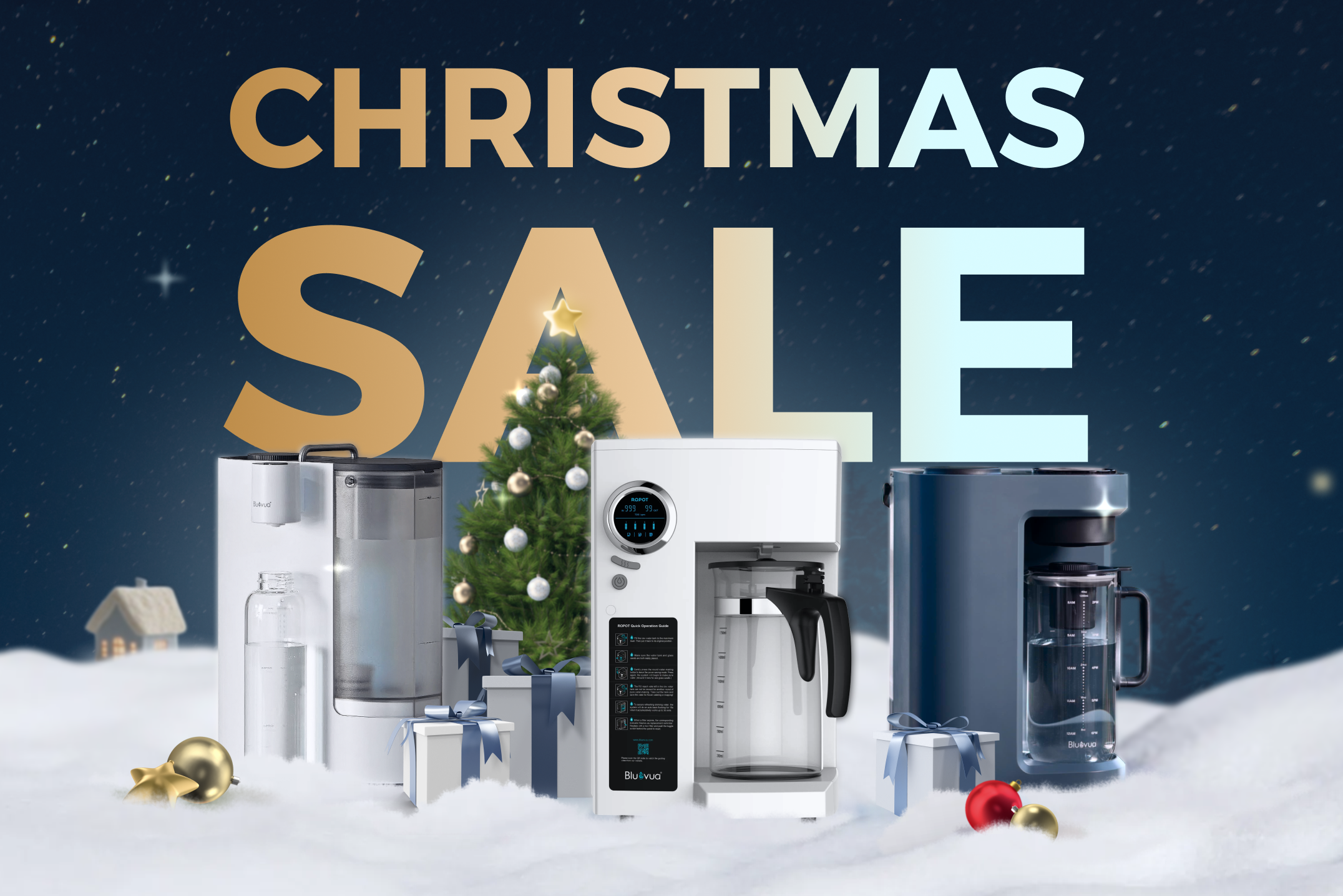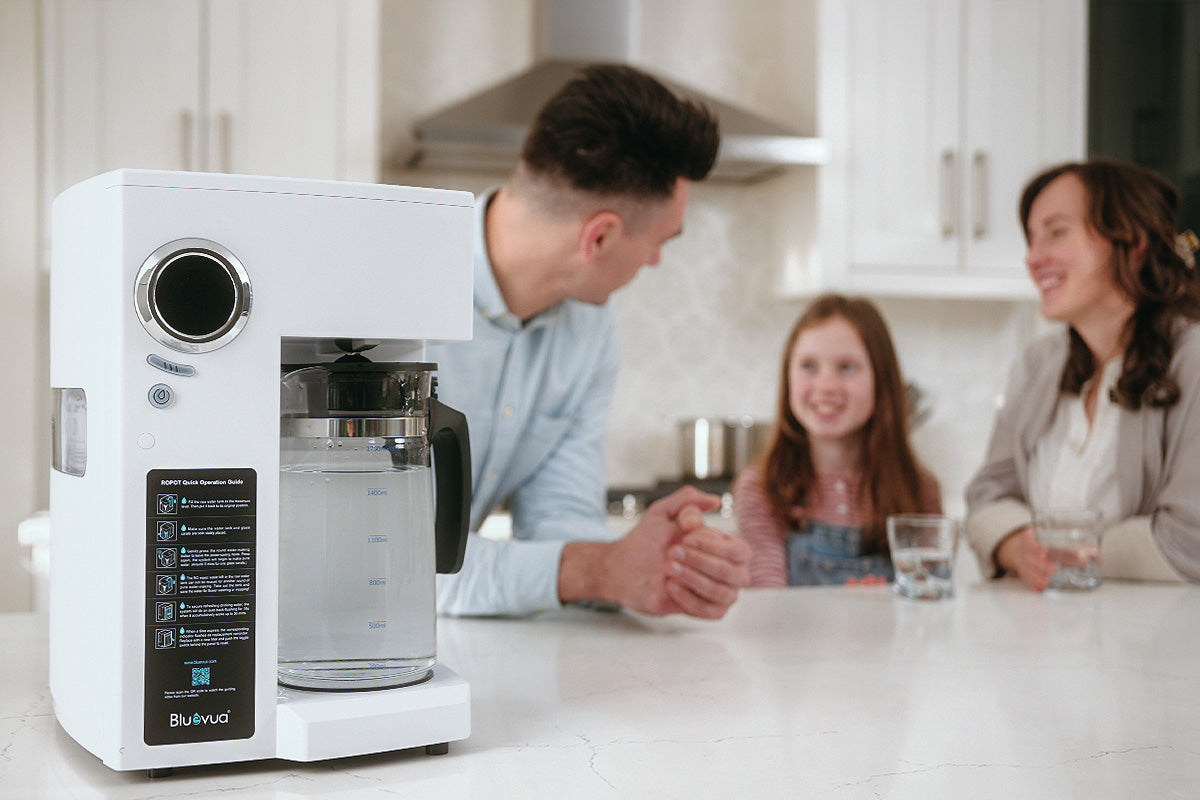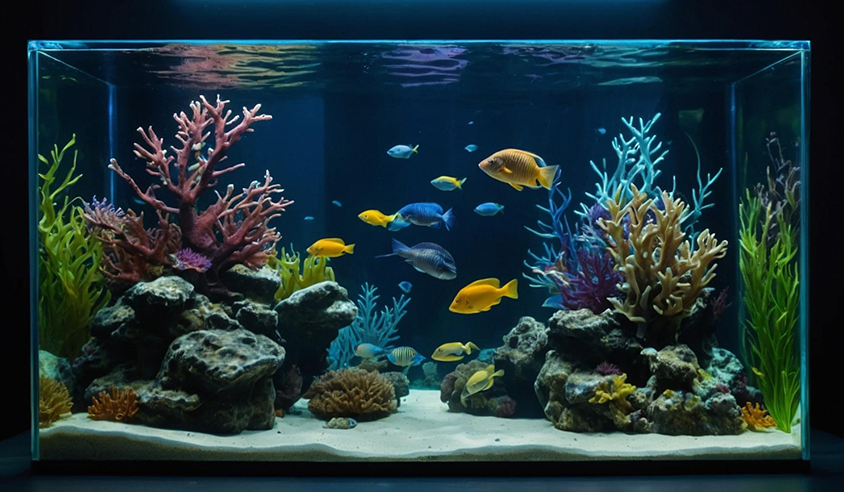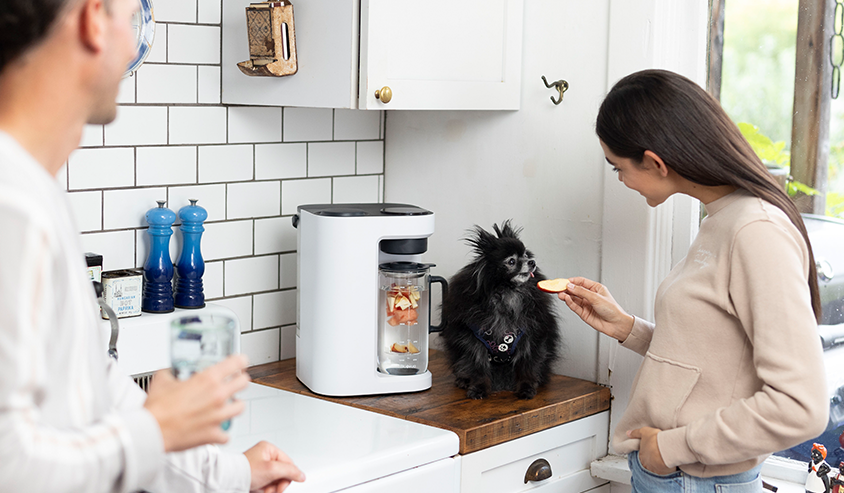A reverse osmosis (RO) system is a powerful tool for aquarium enthusiasts seeking to create the perfect environment for their aquatic life. By filtering water through a sophisticated membrane system, RO technology removes nearly all impurities, providing aquarium owners with pure water as a foundation for their tanks. This article explains how RO systems work, their benefits for both freshwater and saltwater aquariums, and how to effectively use RO water to maintain optimal conditions for fish, corals, and other aquatic creatures to thrive.

Why is an RO System Perfect for Your Aquarium Water?
How RO Creates Pure Water
At the heart of every reverse osmosis (RO) system is a remarkable semi-permeable membrane that acts as an ultra-fine filter. This sophisticated membrane can remove almost all contaminants and impurities from your water, including salts, heavy metals, chlorine, nitrogen compounds, phosphates, and microorganisms. Think of it as creating a blank canvas—pure water that you can customize exactly how you want it.
Create the Perfect Environment
This level of purity gives aquarium owners unprecedented control over their water chemistry. Rather than struggling to remove unwanted substances from tap water, you start with pure water and add only what your aquatic life needs. For instance, African cichlids thrive in hard, alkaline water, while Amazonian fish prefer soft, slightly acidic conditions. With RO water as your base, you can precisely create either environment.
Tailor Water for Sensitive Species
Different aquatic species have evolved to thrive in specific water conditions. Discus fish, known for their sensitivity, require very soft water with minimal dissolved minerals. Reef-dwelling invertebrates need carefully balanced calcium and magnesium levels. Starting with RO water allows you to add exactly the right minerals in the right amounts, creating optimal conditions for even the most demanding species.

What Makes RO Water Safe for Your Aquatic Life?
A reverse osmosis system acts as a powerful guardian for your home aquarium, removing harmful substances that can threaten your aquatic life:
Nitrites and Nitrates
These nitrogen compounds are particularly dangerous in an aquarium environment. While nitrates can be tolerated at very low levels, excessive amounts stress your fish and promote unwanted algae growth. In freshwater aquariums, levels should stay below 40 ppm, but reef tanks require even stricter control—even tiny amounts can harm sensitive corals and invertebrates.
Phosphates and Silicates
Phosphates are notorious for causing aggressive algae blooms that can quickly overwhelm your tank. Even levels as low as 1 ppm in tap water can cause problems, especially in reef aquariums where anything above 0.2 ppm can trigger algae growth that smothers corals. Silicates can lead to stubborn brown algae (diatom) outbreaks, which are particularly harmful to coral health as certain diatoms can actually consume coral tissue.
Phosphates and silicates have large diameters, typically ranging from 0.5 to 5 microns. In comparison, the pore size of an RO membrane is usually around 0.0001 microns, allowing it to effectively remove these compounds. RO filtration removes both phosphates and silicates completely, protecting your aquatic life from these subtle but serious threats.
Heavy Metals and Chlorine
Heavy metals like lead, mercury, and copper can accumulate in the tissues of fish and invertebrates, leading to organ damage, neurological issues, and even cancer. Chlorine, commonly used in water treatment, is equally harmful in aquarium environments, causing breathing problems, stunted growth, and reproductive issues.
RO systems excel at removing both chlorine and heavy metals. The pre-filtration carbon filter absorbs chlorine, while any remaining chlorine is removed by the ultra-fine RO membrane. Heavy metals, like copper (10-50 microns), are much larger than the 0.0001 micron pores of the RO membrane, ensuring they are thoroughly filtered out. This creates a safer, healthier environment for your aquarium’s inhabitants and helps maintain optimal water quality.
How Does an RO System Clean Your Aquarium Water?
An RO system works through several carefully designed stages, each playing a crucial role in delivering pure water for your aquarium.

Stage 1: Pre-Sedimentation Filter
The journey begins with a sediment pre-filter that captures larger particles like dust, rust, and debris. This initial stage is crucial for protecting the more delicate components that follow, especially the RO membrane. Think of it as the first line of defense for your system.
Stage 2: Activated Carbon Prefilter
Next, water passes through activated carbon, which acts like a chemical sponge. This stage eliminates chlorine—a substance highly toxic to fish—along with organic compounds and unpleasant odors.
Stage 3: The RO Membrane
The star of the show is the reverse osmosis membrane, with its incredibly fine 0.0001μm pores. This microscopic filtration removes nearly all contaminants, including:
- Heavy metals like lead and copper
- Pesticides, flourid, PFOA/ PFOS, and other chemicals
- Remaining salts and minerals
Stage 4: Final Polish
The final stage, the post-carbon filter, ensures your water is as clean as possible. This dual-carbon filter offers more thorough filtration than a single carbon system, making it ideal for reef tanks, which require the highest water purity. It guarantees that the water you provide meets the strict demands of even the most sensitive marine life.
Why is RO Water Essential for Saltwater Aquariums?
Maintaining a successful saltwater aquarium requires precision and consistency, and RO water provides the perfect foundation for this delicate ecosystem.
Perfect Starting Point
Unlike tap water, which can contain varying levels of salts and harmful contaminants, RO water gives you a clean slate. This purity is essential when mixing saltwater, as it ensures that only the intended marine salts and minerals are present in your aquarium. Without unwanted substances interfering with the salt mix, you can create water that more closely mimics natural ocean conditions.
Stability for Sensitive Species
Marine life, especially corals and invertebrates, are incredibly sensitive to water quality fluctuations. Even minor changes in parameters can stress or harm these delicate creatures. RO water helps maintain stability by:
- Eliminating contaminants that could throw off water chemistry
- Providing consistent water quality for regular toppings and water changes
- Allowing precise control over mineral content
Success in Coral Keeping
For reef aquariums, water quality is especially critical. Corals require specific levels of calcium, magnesium, and other trace elements to grow and thrive. Starting with RO water allows you to carefully control these parameters without interference from unwanted compounds that might be present in tap water.
How to Choose the Right Countertop RO System for Your Aquarium
When it comes to choosing a countertop RO system for your home aquarium, size matters. Your selection should be based on both your tank's volume and your maintenance routine.

Understanding Your Needs
Before selecting a system, consider:
- Your home aquarium's total volume
- Frequency of water changes
- Available space for the RO system
- Budget considerations
Key Features to Consider
Quality RO systems for delicate aquatic life should offer:
- Reliable filtration accuracy
- UV protection for added security
- Flexible remineralization options
Compact Solutions for Small Tanks
For smaller home aquariums or nano reef setups, the Bluevua ROPOT-Lite (UV) Countertop RO Water System offers an ideal solution. This compact system features:
- 0.0001μm filtration accuracy
- 7-stage advanced filtration with built-in UV protection
- Easy maintenance access
- Efficient water delivery rates

Complete Protection for Larger Tanks
The ROPOT (UV) suits larger aquariums and more demanding setups:
- The same precise 0.0001μm filtration
- Single water production capacity
- Enhanced UV protection capabilities
- Ideal for reef tanks and larger systems
While initial cost is a consideration, investing in a quality RO system can save money long-term by protecting your valuable aquatic life and reducing maintenance issues.
How to Perfect Your Water Parameters Using RO Water
Starting with pure RO water gives you complete control over your home aquarium's water chemistry. Let's explore how to adjust key parameters to create the perfect environment for your aquatic life.

General Hardness (GH) Adjustment
GH represents the concentration of dissolved minerals, particularly calcium and magnesium, in your water. Different fish species have evolved to thrive in specific hardness ranges:
1. For soft-water fish: Maintain GH between 4 and 8 dGH
2. For hard water species: Target 12-20 dGH
3. Adjustment methods:
- Add mineral supplements gradually
- Use commercial GH boosters
- Incorporate coral gravel or limestone for natural buffering
Carbonate Hardness (KH) Management
KH acts as your home aquarium's buffering system, preventing dangerous pH swings. Proper KH levels are crucial for:
- pH stability
- Coral growth in reef tanks
- Overall system health
To adjust KH:
- Use marine buffer solutions
- Add baking soda (sodium bicarbonate) carefully
- Include crushed coral in filtration
- Monitor levels weekly
pH Balance
With stable KH in place, pH becomes easier to manage:
- Most freshwater fish thrive in 6.5-7.5
- Marine tanks typically need 8.0-8.4
- Always adjust pH slowly
- Test regularly to ensure stability
Conclusion
Reverse osmosis water has proven to be a game-changing foundation for successful aquarium keeping. By removing harmful chemicals and drastically reducing salt levels, countertop RO systems provide aquarists with a pure starting point that can be precisely customized for any aquatic environment. This level of control is particularly crucial for saltwater aquariums, where water stability directly impacts the health of sensitive corals and marine life. Whether you're maintaining a freshwater community tank or a complex reef system, countertop RO water offers the reliability and flexibility needed to create thriving underwater ecosystems.





Leave a Comment
All comments are moderated before being published.
This site is protected by hCaptcha and the hCaptcha Privacy Policy and Terms of Service apply.